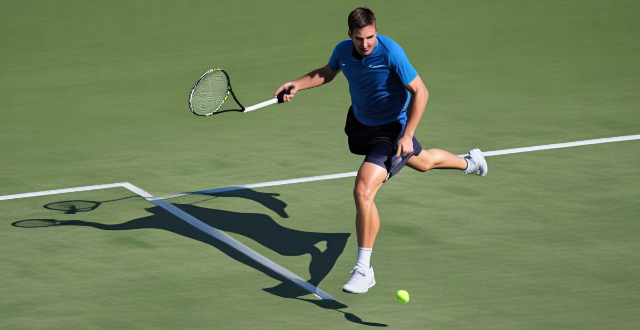Selecting the perfect tennis racquet can enhance your game and prevent injuries. Consider your skill level, swing type, preferred racquet weight, grip size, string tension, balance, length, feel, vibration dampening, and budget when choosing a racquet that aligns with your playing style, physical capabilities, and preferences. Hands-on testing and personal feel are crucial in finding the right racquet for you.

How to Choose the Right Tennis Racquet for You
Selecting the perfect tennis racquet can significantly enhance your game and prevent injuries. Here's a comprehensive guide on how to determine which racquet suits you best:
1. Assess Your Playing Level
Firstly, consider your skill level and playing frequency:
- Beginner: Look for a racquet that is lightweight, has a larger head size, and offers more power and forgiveness.
- Intermediate: Players at this level may want a balance of power and control, often found in medium-head racquets.
- Advanced: Advanced players typically prefer racquets with smaller head sizes for increased control and feel.
2. Consider Your Swing Type
Your swing style affects your choice of racquet:
- Aggressive Baseliner: You might favor a racquet with a heavier weight for more power and stability.
- All-Court Player: A well-balanced or slightly head-light racquet could provide the versatility needed for both aggressive and defensive play.
- Serve-and-Volley Specialist: A lighter racquet with a smaller head size will help with quick maneuverability and enhanced serve speed.
3. Determine Your Preferred Racquet Weight
Racquet weight impacts power and swing speed:
- Lighter Racquets (under 9.5 ounces): Easier to handle, good for control and fast swings.
- Heavier Racquets (over 11 ounces): Offer more mass for powerful strokes but require strong wrists and arms.
4. Choose the Right Grip Size
A proper grip ensures comfort and reduces strain:
- Use a ruler to measure the distance from the tip of your ring finger to the crease of your palm. Match this measurement to the corresponding grip size.
5. Test Different Racquet Models
Try out various racquets to find what feels right:
- Visit a local sports store or tennis club to demo different models.
- Pay attention to how the racquet feels during your swing, and whether it provides the desired amount of power and control.
6. Consider String Tension and Pattern
The string setup also affects play:
- Higher tension gives more control but requires stronger strokes.
- Lower tension adds power but reduces accuracy.
- Experiment with different string patterns for customized play.
7. Don't Forget About Racquet Balance
The balance point affects the racquet's handling:
- Head-heavy: Offers more power but less control.
- Head-light: Greater maneuverability and ease of use at the net.
- Evenly balanced: A compromise between power and control.
8. Check the Racquet Length
Standard adult racquet length is 27 inches, but variations can suit different players:
- Shorter Racquets: Easier to control, better for net play.
- Longer Racquets: Provide reach and power but require better coordination.
9. Look for the Right Feel and Vibration Dampening
Comfort is key:
- Some racquets have built-in vibration dampening to reduce shock upon contact.
- The overall "feel" should be comfortable and not cause excessive vibrations that lead to arm discomfort.
10. Budget Considerations
Set a budget range:
- High-end professional racquets can be expensive but offer top performance features.
- More affordable options are available that still provide excellent playability without breaking the bank.
By considering these factors, you can narrow down your choices and find the tennis racquet that aligns with your playing style, physical capabilities, and preferences. Remember, the best way to know if a racquet is right for you is through hands-on testing and personal feel.